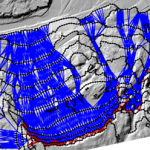Image source: Pexels
The geographic information systems (GIS) market is expected to boom to a massive $14.5 billion by 2025. This powerful technology has been a game-changer in exploring and understanding our world. Think of it as a useful toolbox for planners, researchers, and decision-makers. It lets them see, analyze, and visualize data in a way that makes sense, helping them uncover trends, patterns, and connections across different locations.
But as data analysis within GIS platforms has developed, these systems have moved from being simple mapping tools to becoming potent instruments for enhancing geographic insights, opening the door to a more complex and nuanced knowledge of the world around us.
GIS: A Brief Overview
GIS is a framework based on the study of geography that is used for collecting, organizing, and analyzing data. It is used to arrange layers of information into representations using maps and three-dimensional scenes, assess spatial location, and integrate a variety of data types. With this feature, GIS makes it possible to get deeper insights into data, including relationships, trends, and scenarios, which helps users make more informed decisions.
The Role of Data Analysis in GIS
Data analysis, which includes duties like inspecting, cleaning, transforming, and modeling geographical data, is essential in the field of GIS. This method is essential for making well-informed decisions and revealing important insights in a variety of fields, including public health, transportation, urban planning, and environmental protection.
The nearest neighbor algorithm method, a mainstay of data sorting and forecasting, is essential to this undertaking. When the nearest neighbor algorithm is integrated into the geographic insights pipeline, the breadth and depth of analysis are enhanced, leading to deeper insights and more informed decisions in specific geographic contexts.
Enhancing Environmental Conservation Efforts
The enhanced data processing powers of GIS have been a major asset to environmental conservation initiatives. Conservationists can more effectively track wildlife movements, monitor changes in land use, and evaluate the wide-ranging effects of climate change on various ecosystems by carefully evaluating geographic data.
This comprehensive data serves as the basis for developing successful conservation plans, guaranteeing the long-term management of natural resources, and implementing preventative actions to save threatened species and their vital ecosystems. To further improve the overall efficacy of environmental protection activities, GIS data analysis facilitates the detection of environmental hazards and the implementation of focused conservation initiatives.
Revolutionizing Urban Planning and Development
Urban planners and developers actively leverage GIS data analysis to assess land use patterns, gauge population growth, and guide infrastructure development. Through this analysis, they actively plan sustainable cities, ensuring space is used efficiently, public transport routes are optimized, and essential services are thoughtfully planned.
Moreover, GIS makes it possible to proactively identify regions that need to be developed or preserved, thereby striking a balance between environmental sustainability and expansion. This practical method makes it easier to create livable, sustainable urban environments that meet the demands of their residents and protect the environment for coming generations.
Transforming Transportation Networks
GIS data analysis is useful in the transportation industry for route optimization, safety improvement, and efficiency enhancement. Transit planners can create more efficient public transit systems, improved road networks, and safer travel experiences for all users by evaluating traffic patterns, accident statistics, and road conditions.
Advancing Public Health Initiatives
Image source: Pexels
GIS is used by public health experts to monitor disease outbreaks, examine the location of healthcare services, and pinpoint vulnerable communities. GIS greatly contributes to public health surveillance and intervention techniques by helping with the efficient allocation of resources, planning of health interventions, and tracking of disease spread through the mapping of health data.
Enabling Precise Agricultural Practices
GIS data analysis has greatly benefited agriculture by enabling precision agricultural techniques. In order to help with the accurate application of water, fertilizer, and pesticides, farmers and agronomists utilize GIS to assess soil data, weather patterns, and crop yields. In addition to raising agricultural yields, this minimizes waste and its negative effects on the environment, which supports sustainable farming practices.
Challenges and Future Directions
There are still challenges even with the tremendous improvements and uses of data analysis in GIS. Among the concerns that need to be addressed are data privacy, accuracy, and the requirement for advanced analysis methodologies. Solutions that could further transform spatial insights are the integration of real-time data analysis and the application of artificial intelligence (AI) and machine learning (ML) in GIS.
The incorporation of increasingly sophisticated data analysis methods and technologies is where GIS is headed. AI and ML technologies can analyze complex geographic data sets automatically, quickly spotting patterns and trends that would be impossible for humans to recognize. When combined with IoT sensors and devices, real-time analysis will become possible, giving decision-makers instantaneous access to information on traffic patterns, environmental conditions and public health issues. This will further enhance the usefulness of GIS.
In Closing
GIS data analysis is revolutionizing our understanding and interaction with geographical features in our world. GIS offers deeper insights into numerous disciplines, including agriculture, public health, urban planning, transportation, and environmental protection, thanks to advanced data analysis techniques. Despite obstacles present within GIS’ development path, its future is filled with promising developments that will further advance spatial insights and decision-making abilities. Advancement of cutting-edge technologies within GIS may even open new frontiers of research and comprehension in spatial research.


